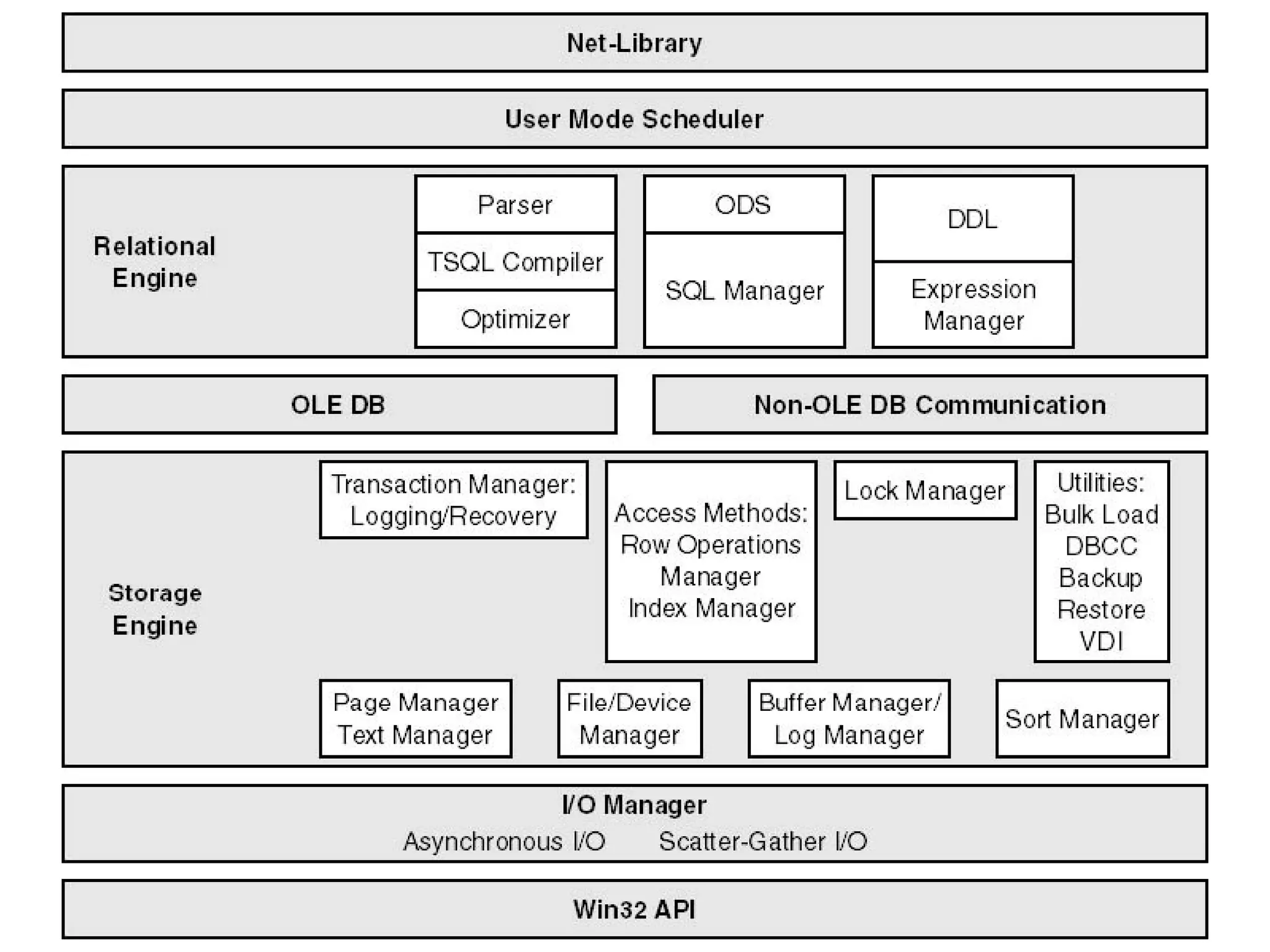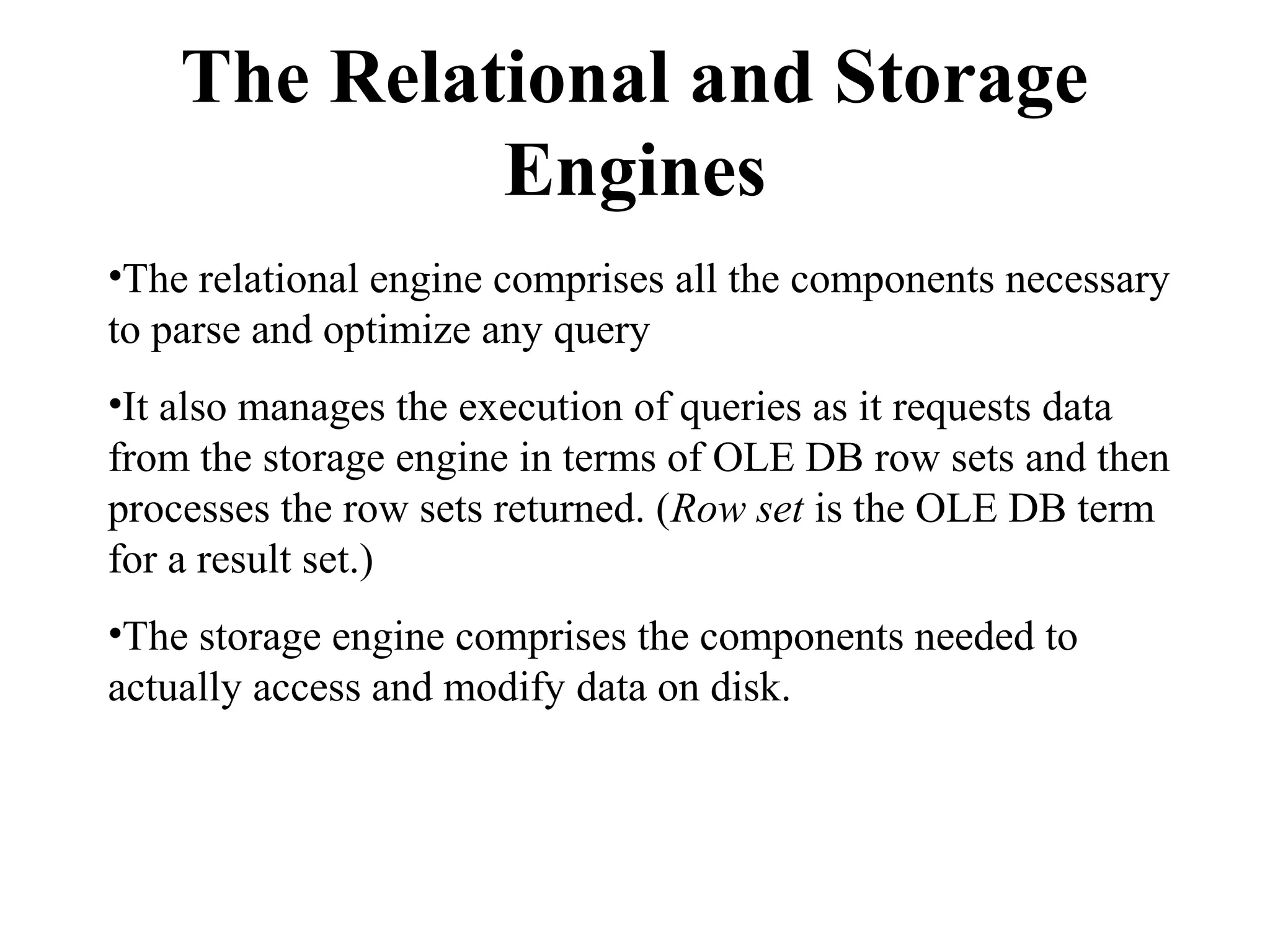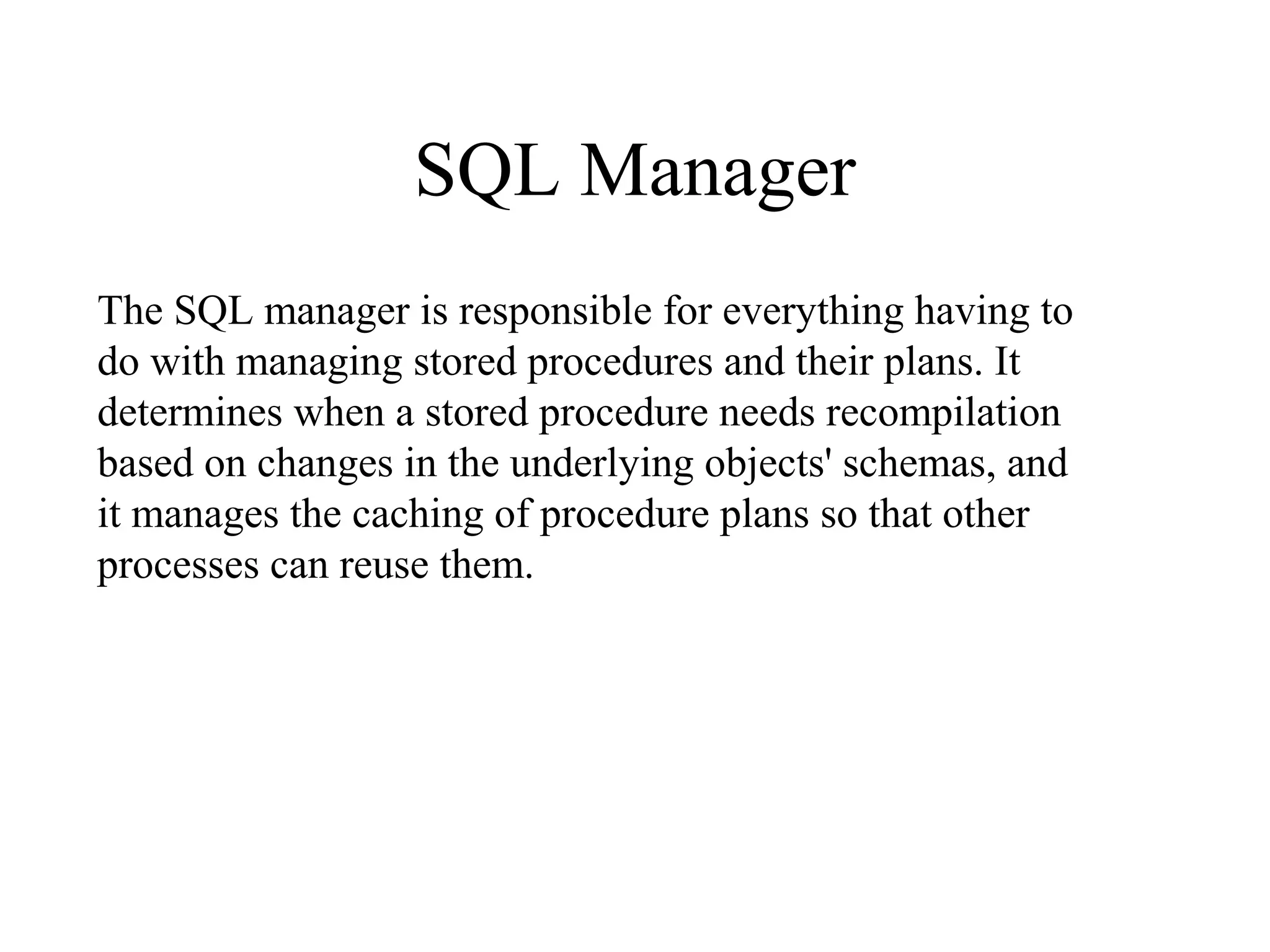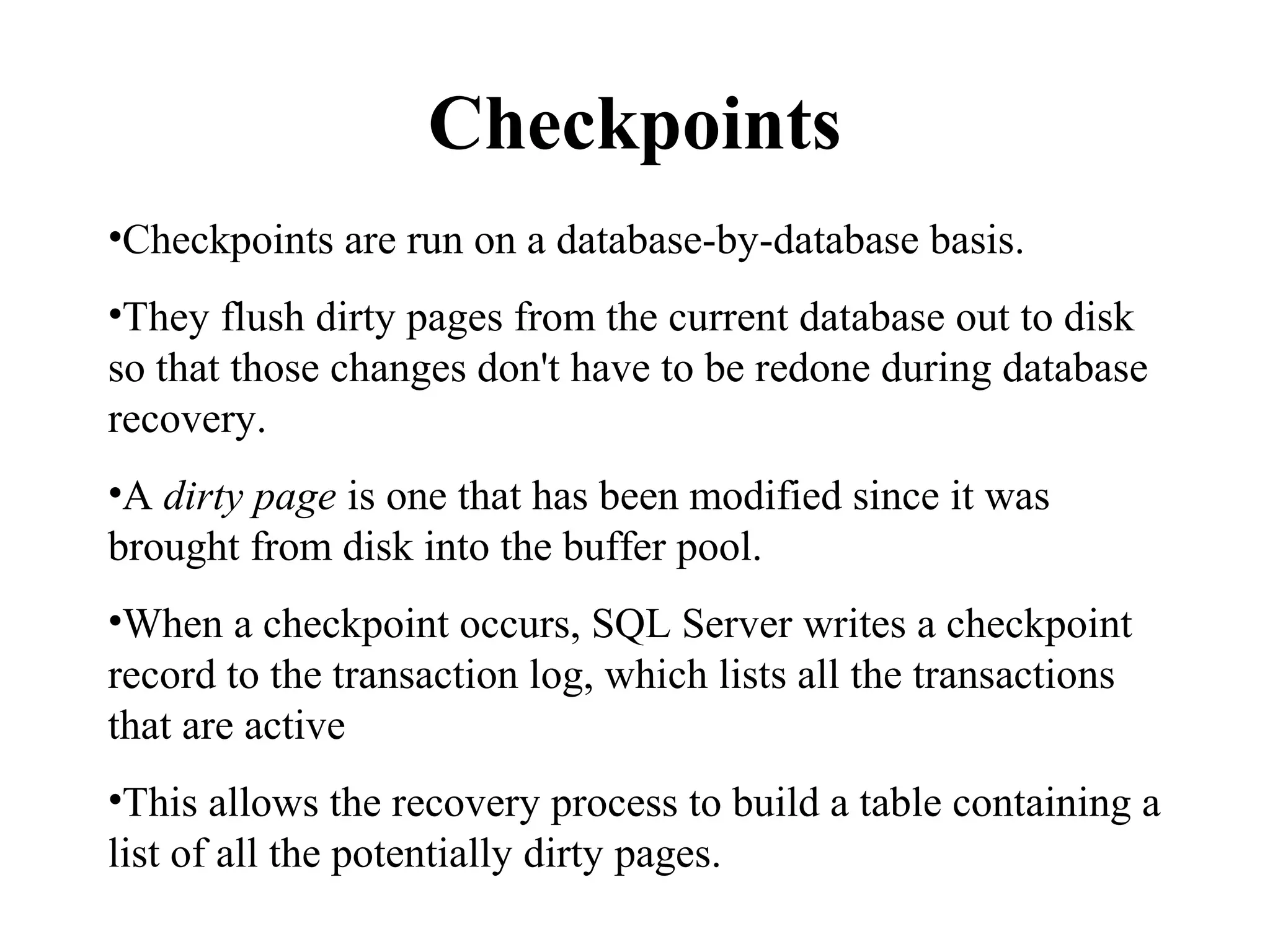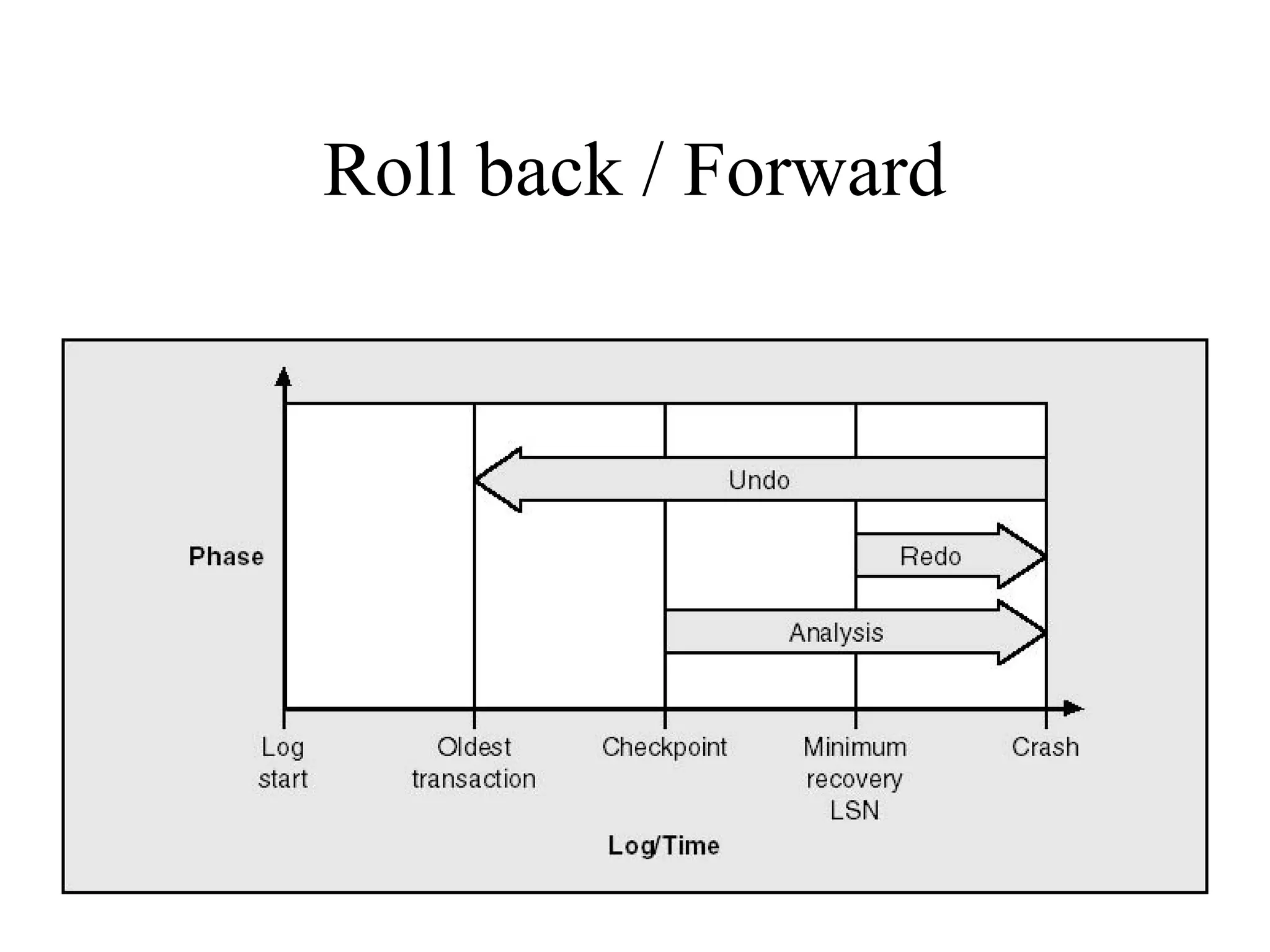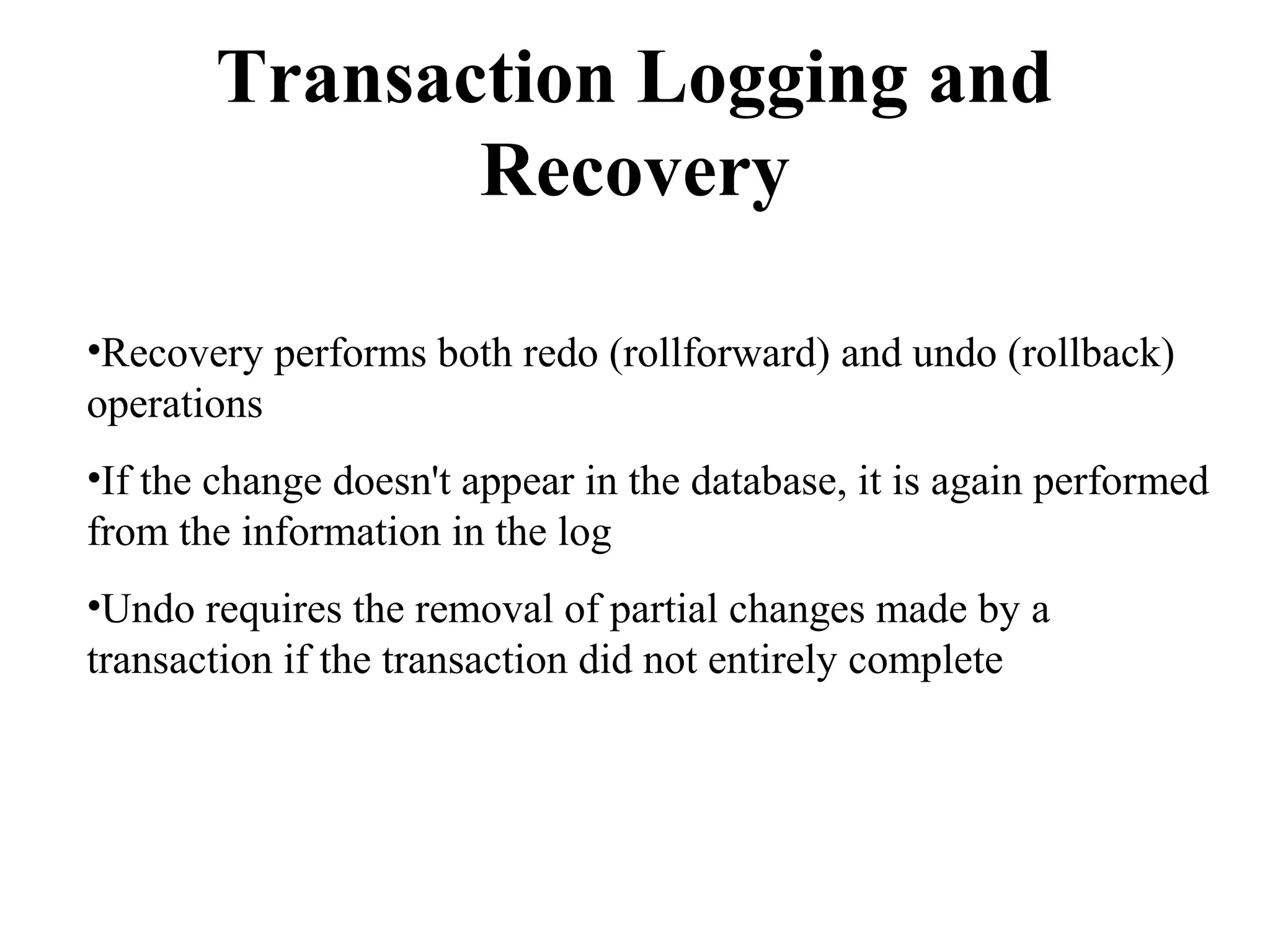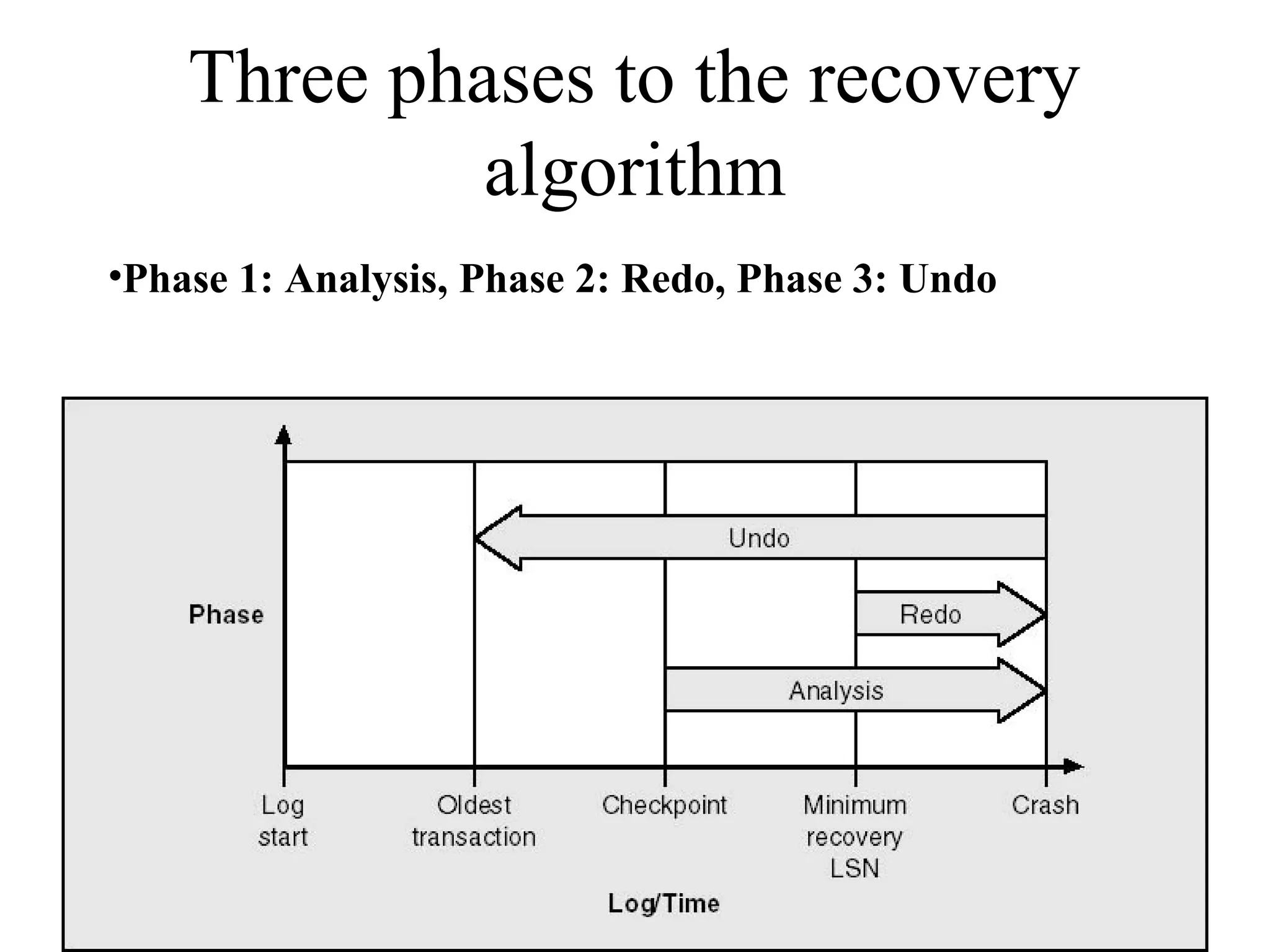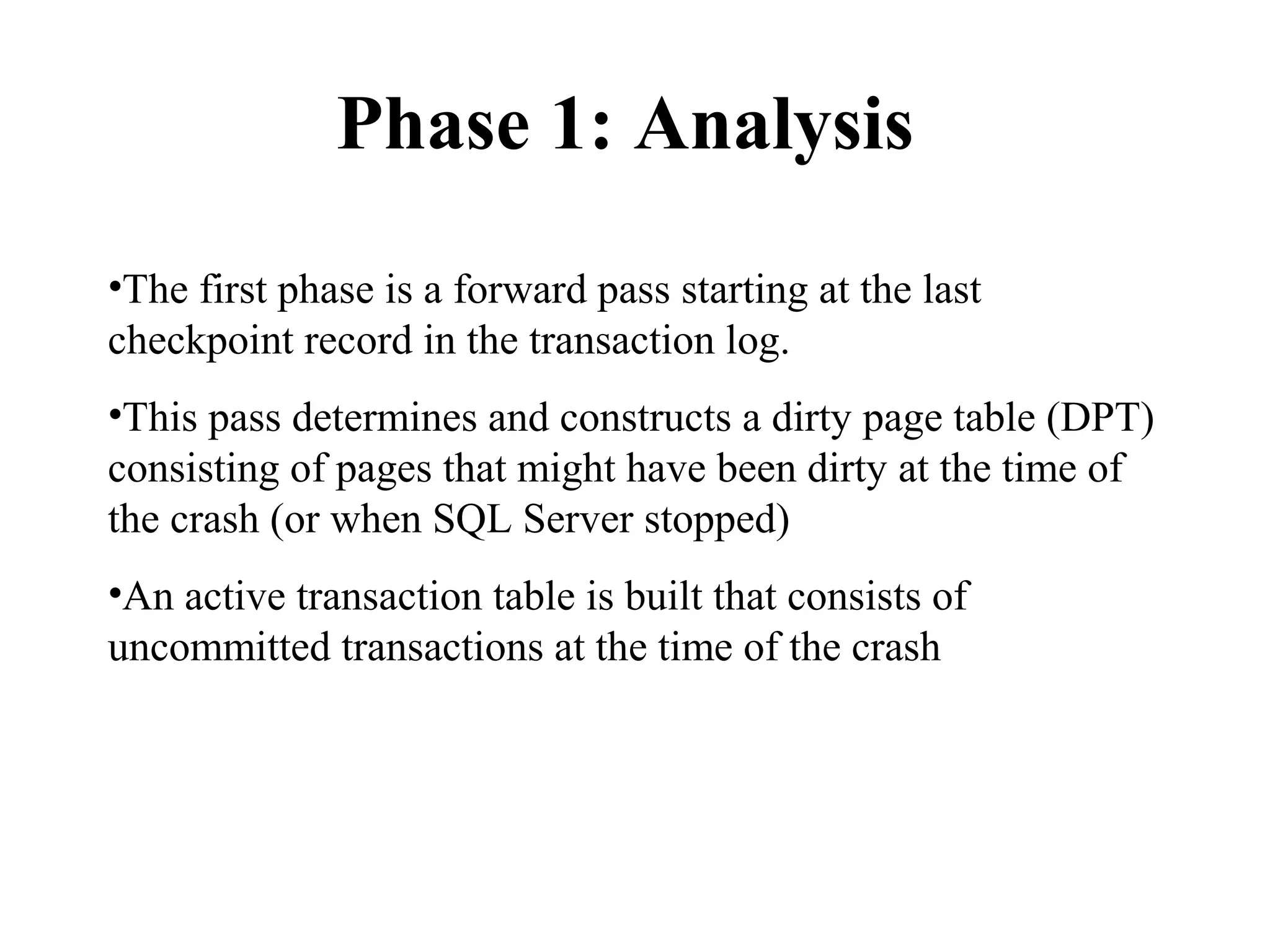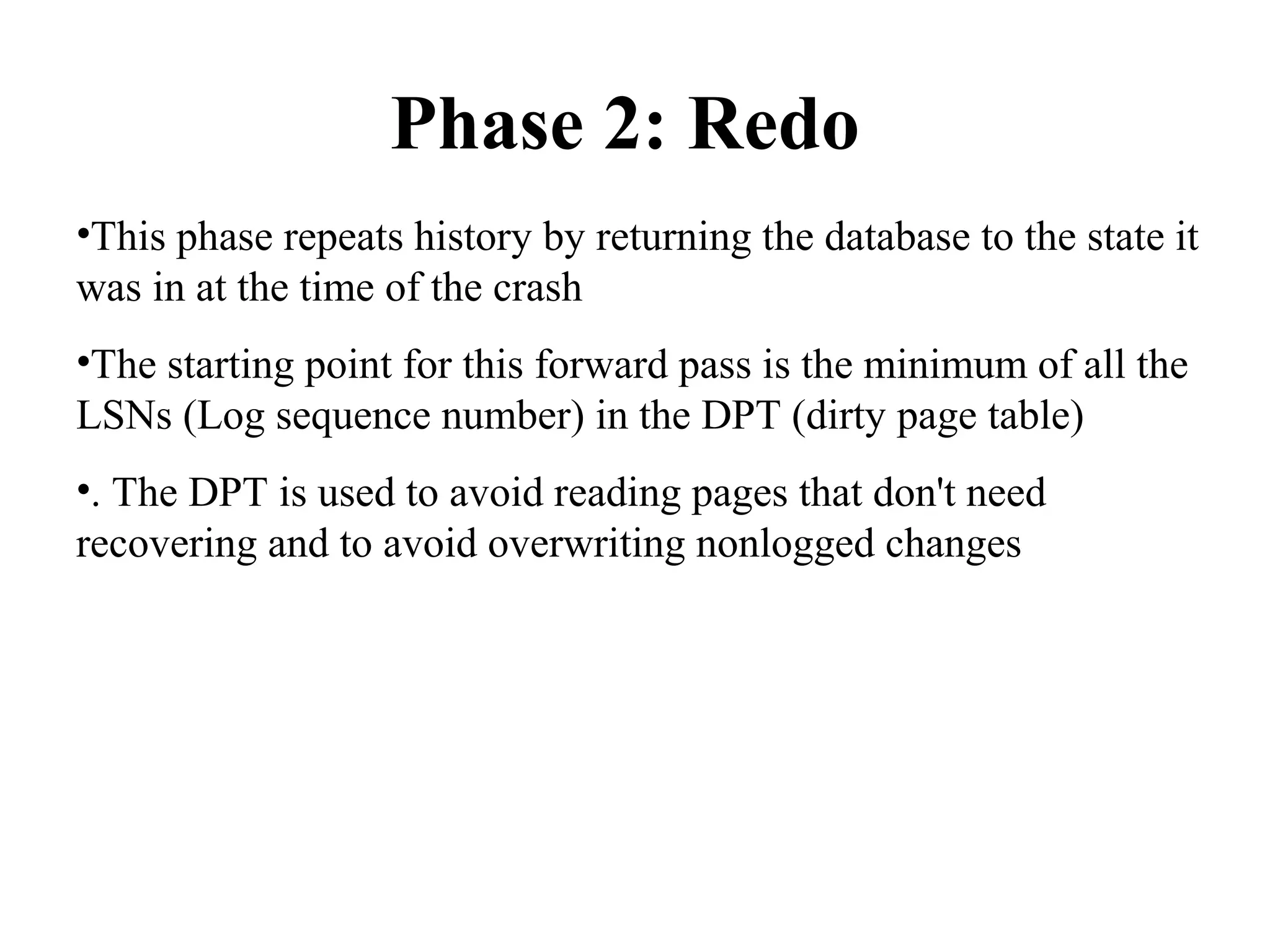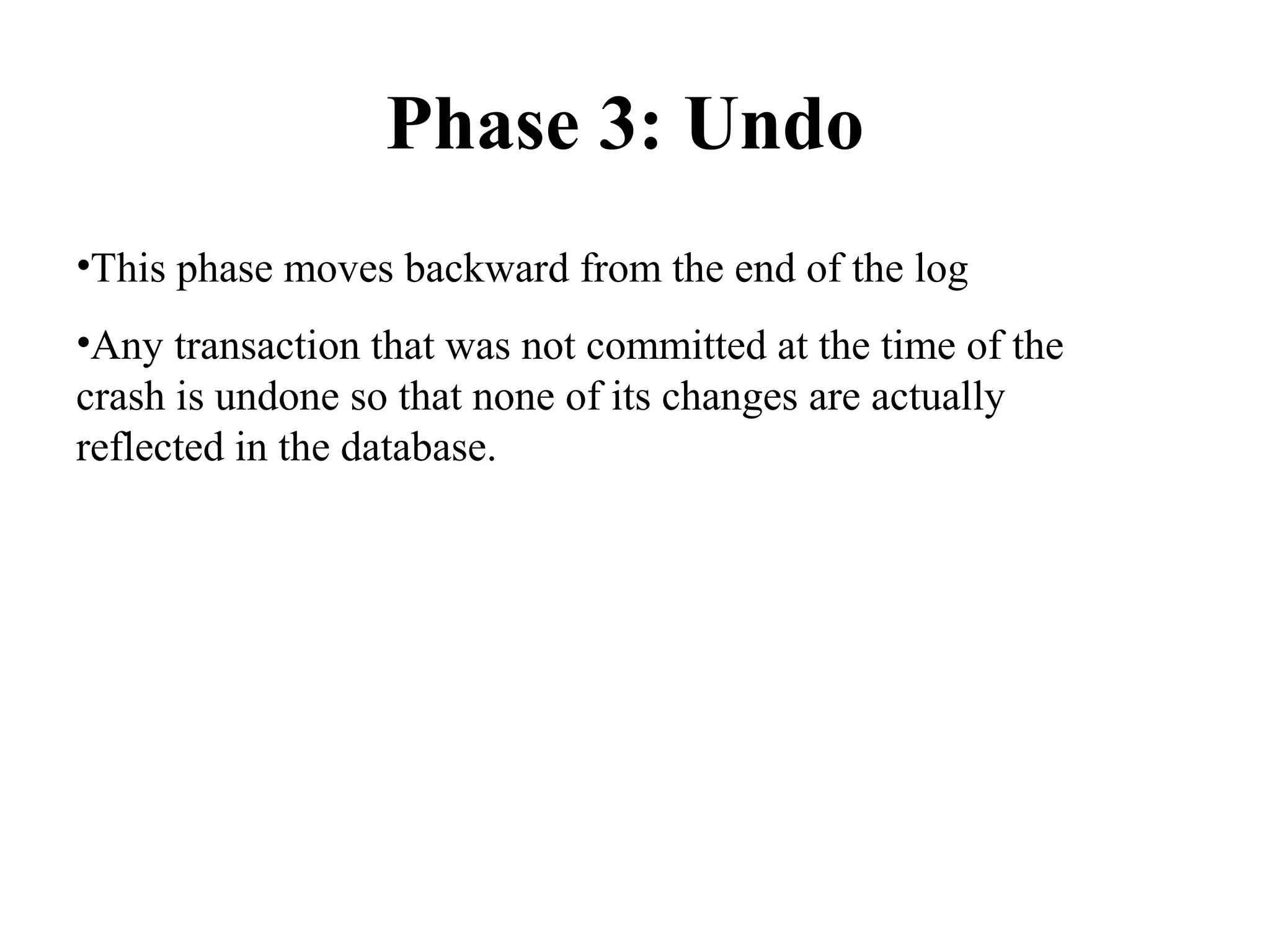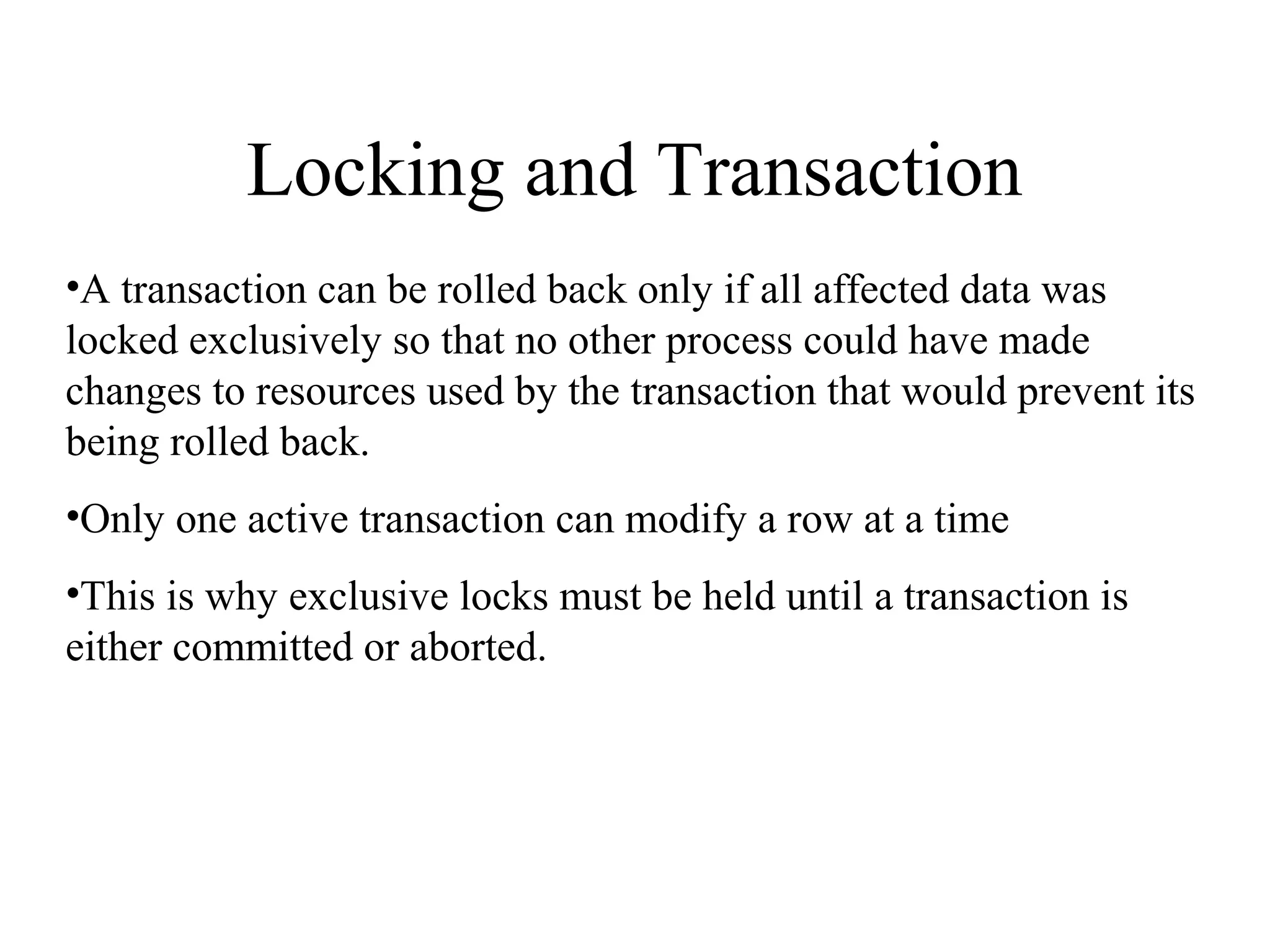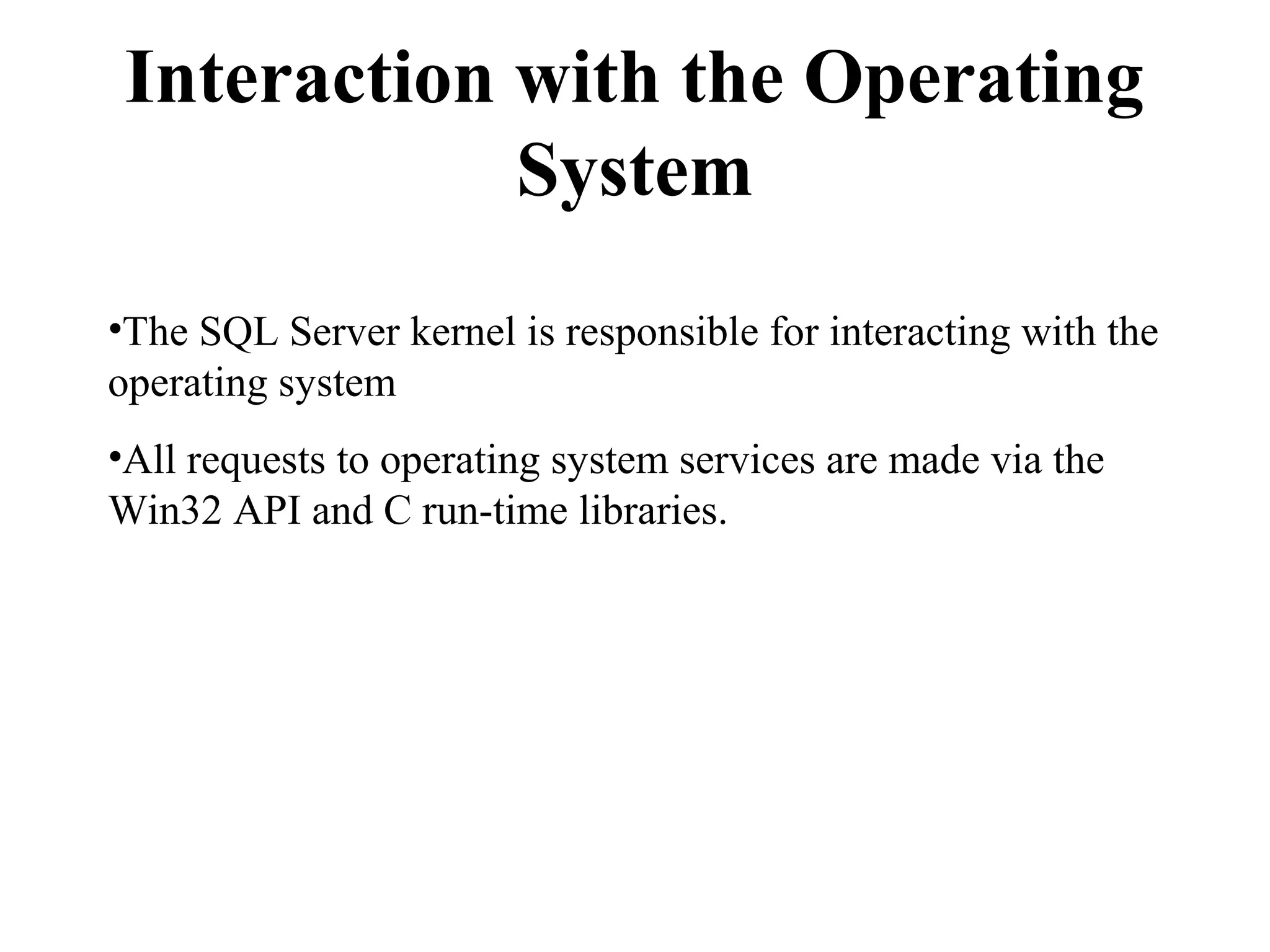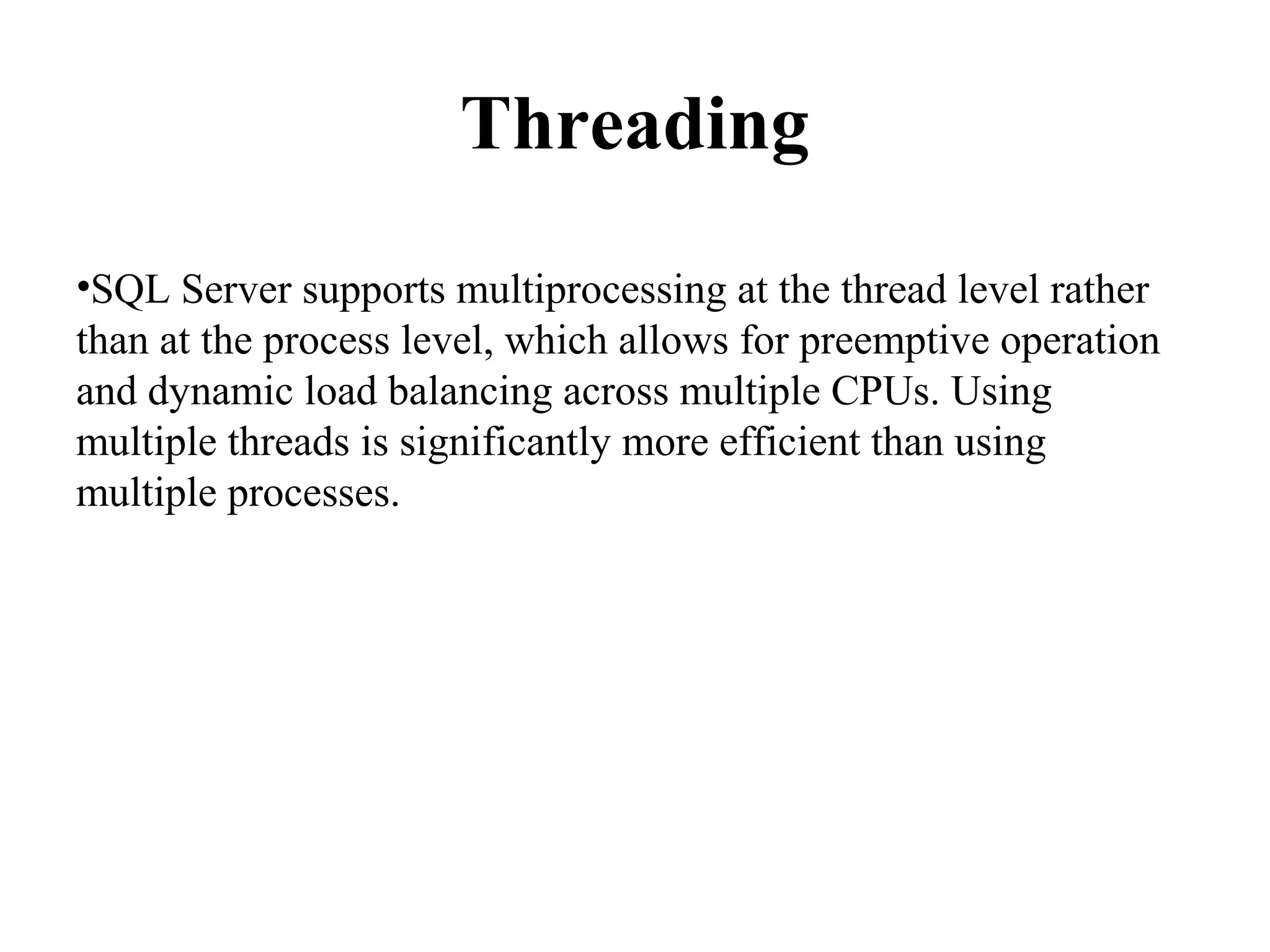The document summarizes key components of SQL Server including the relational and storage engines, SQL manager, checkpoints, transaction logging and recovery, and threading. The relational engine handles queries and requests data from the storage engine. The SQL manager manages stored procedures. Checkpoints flush dirty pages to disk for recovery. Transaction logging supports rollback and redo during the three phase recovery algorithm: analysis, redo, and undo. Locking ensures transactions can rollback if uncommitted. SQL Server interacts with the OS via threads for multiprocessing.
